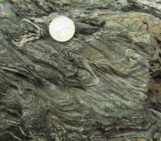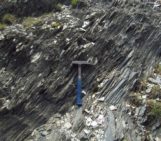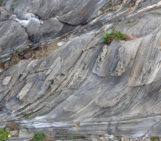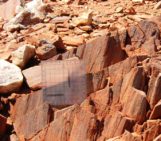
Scholz (1998) is the “must-read” review article about rate- and state- variable laws of rock friction. The article is a robust introduction to the state-of-the art of the discipline at the end of the past century and should be considered of particular interest for students and/or early career scientists. In spite of its relative simplicity, rock mechanics unfortunately is still not taught universally in earth sciences curricula. The equations that Scholz describes have great success in explaining a wide range of earthquake phenomena. The author moves through the article progressively from physical mechanisms to natural phenomena in which they are manifested. He discusses frictional stability regimes and seismogenesis, then seismic coupling and seismic styles. A particular focus is devoted to stable and unstable friction at different depths and slip at different stages of the seismic cycle. Figures elegantly show how theory is well tested with observations from natural systems. The author concludes with outstanding problems in earthquake mechanics.
The basics are simple: due to tectonic motion, shear stress builds up on a locked fault until the failure stress is reached. At this time an earthquake occurs and the accumulated stress is relieved. Scholz illustrates – also thanks to the useful illustrative boxes in the article – the stability regimes focusing on the “spring example”. The extension of the spring is invoked as analogous to the elastic strain in the rock adjacent to a fault (Fig. 1). The slip of the plate is analogous to an earthquake on a fault. This is the so-called stick–slip behavior. When the stored elastic strain in the spring is relieved we get the so-called elastic rebound.
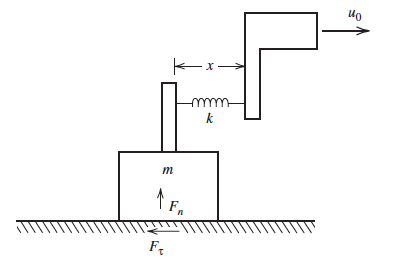
Fig. 1 Slider-block model for fault behavior. The driver plate extends the spring at constant velocity u0 until the spring force kx equals the static friction force Fτ . At this time slip occurs and the cycle repeats (Fig. 8-18, Turcotte and Schubert, 2002)
More recent developments have provided a deeper and broader understanding of this topic, and enormous progress is still being made e.g., friction of lamellar minerals such as phyllosilicates, revealing how friction in such materials may be anomalously low (Scholz, 2019 and references therein, Fig. 2a). These studies are helping in better explaining why there are two classes of faults, weak and creeping, and strong and seismogenic. Furthermore, characteristic seismogenic properties of oceanic faults can be understood as consequences of friction of mafic and ultramafic rocks whose mineralogy was not considered in the ‘900 (Fig. 2b).
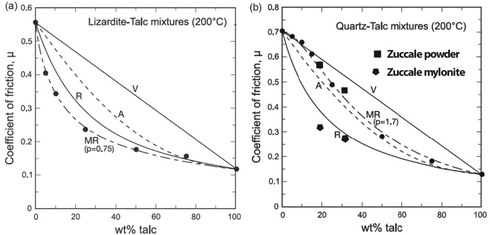
Fig. 2. (a) Friction of mixtures of lizardite and talc as a function of their talc composition; (b) friction of mixtures of quartz and talc. All experiments are at 100 MPa normal load (for more explanations see Fig. 2.10; Scholz, 2019)
In the last thirty years, the discovery of slow slip events in subduction zones and elsewhere opened a new avenue of research with great opportunities for rock lovers of investigations on possible field analogues (see for example Giuntoli & Viola, 2022; and Bernaudin & Gueydan, 2018). As often happens in Earth Science, advancing in seismological imaging and improvement in technology will trigger new views and insight. A lot has still to come.
Written by Gianluca Frasca and the TS Must Read team
References
Bernaudin, M., & Gueydan, F. (2018). Episodic tremor and slip explained by fluid‐enhanced microfracturing and sealing. Geophysical Research Letters, 45(8), 3471–3480. https://doi.org/10.1029/2018GL077586
Giuntoli, F., & Viola, G. (2022). A likely geological record of deep tremor and slow slip events from a subducted continental broken formation. Scientific Reports, Nature, 12, 4506, https://doi.org/10.1038/s41598-022-08489-2
Scholz, C. H. (1998). Earthquakes and friction laws. Nature, 391(6662), 37–42. https://doi.org/10.1038/34097
Scholz, C. H. (2019). The mechanics of earthquakes and faulting. Cambridge university press.
Turcotte, D. L., & Schubert, G. (2014). Geodynamics. Cambridge University Press.

